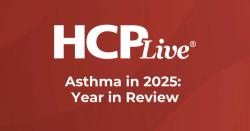
OR WAIT null SECS
High-Flow Oxygen Fails to Reduce Mortality due to COVID-19 Respiratory Failure
Conflicting evidence on the risks associated with intubation in patients with COVID-19 initiated a debate in the medical community regarding the benefit of utilizing high-flow oxygen.
Data from a large randomized clinical trial that evaluated the use of high-flow oxygen as opposed to standard oxygen in patients with COVID-19 related respiratory failure demonstrated no significant difference between the 2 approaches in reducing mortality.
Since the COVID-19 pandemic led to 6 million deaths worldwide as a result of hypoxemic respiratory failure, these findings follow a series of various studies that have evaluated supportive noninvasive oxygenation with the objective of avoiding intubation, including noninvasive ventialtion with pressure support, continous positive airway pressure, and high-flow nasal cannula oxygen, which was examined in this study.
While several trials have indicated the use of high-flow oxygen decreased the risk of intubation, there's been no evidence demonstrating that this practice does not improve survival rates. Additionally, the conflicting evidence on the risks associated with intubation initiated a debate in the medical community regarding the benefit of utilizing high-flow oxygen for this population.
Comparing Respiratory Failure Outcomes
Jean-Pierre Frat, MD, PhD, CHU de Poitiers, Médecine Intensive Réanimation, and a team of investigators performed the SOHO-COVID clinical analysis across 34 French intensive care units as an ancillary trial of the ongoing SOHO clinical study which included patients with acute hypoxemic respiratory failure regardless of the cause. Enrollment for this study occurred from January-December 2021, with March 5, 2022 serving as the final follow-up.
All 711 participating patients included were experiencing respiratory failure due to COVID-19 with a ratio of partial pressure of arterial oxygen to fraction of inspired oxygen of 200 mm Hg or below. Randomization assigned 357 patients to receive high-flow oxygen treatment, and 354 to receive standard oxygen via a nonbreathing mask set at a 10-L/min minimun at initiation.
In order to determine if high-flow oxygen could improve a patient's chances of survival, investigators set the primary outcome as mortality at day 28. A few of the 13 secondary outcomes included the proportion of patients requiring intubation, the number of ventilator-free days at day 28, mortality at day 90, mortality and length of stay in the ICU, as well as adverse events.
High-Flow Oxygen Reduces Intubation, Not Mortality
In assessment of the primary endpoint, investigators reported mortality in 36/357 (10%) patients who received high-flow oxygen, and 40/354 (11%) patients who received standard oxygen, at day 28. The relationship failed to demonstrate a statistically significant benefit.
The group that received high-flow oxygen had a significantly lower intubation rate, however, the number of ventilator-free days reported at day 28 was not significant between the groups. Aside from the reduced intubation rate, none of the secondary outcomes yielded significant results, including length of stay and mortality in the ICU, and mortality throughout day 90.
Ventilator-associated pneumonia, the most common adverse event, occurred in 93/160 (58%) patients in the high-flow oxygen group and in 99/186 (53%) patients in the standard oxygen group.
"Among patients with respiratory failure due to COVID-19, high-flow nasal cannula oxygen, compared with standard oxygen therapy, did not significantly reduce 28-day mortality," investigators concluded.
The study, "Effect of High-Flow Nasal Cannula Oxygen vs Standard Oxygen Therapy on Mortality in Patients With Respiratory Failure Due to COVID-19: The SOHO-COVID Randomized Clinical Trial" was published in JAMA.


